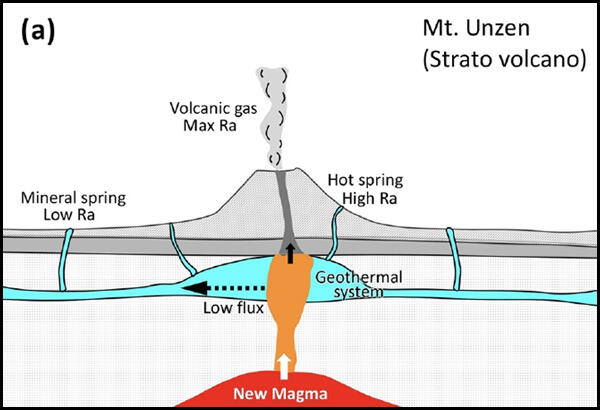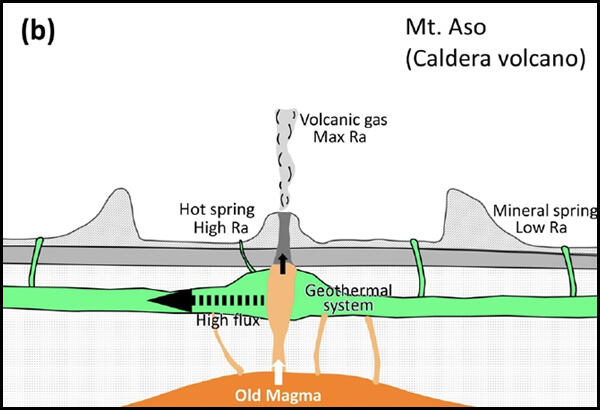An international joint research group led by Director Yuji Sano of the Center for Advanced Marine Core Research, Kochi University, and Specially Appointed Assistant Professor Takanori Kagoshima of the Faculty of Science, Academic Assembly, University of Toyama, have, for the first time in the world, used helium isotopes to show the difference between caldera volcanoes and stratovolcanoes. The findings were published in Communications Earth & Environment.


Provided by Kochi University
The research group investigated the helium isotope ratios of the hot spring water, mineral spring water, and groundwater around Mt. Aso, a typical caldera volcano in central Kyushu, and around Mt. Unzen, a complex stratovolcano. In the hot springs around both volcanoes, it was found that the isotope ratio tends to be high near the crater, due to the influence of magma, and then decreases with distance due to the influence of the Earth's crust. Using a hydraulic model to analyze this result revealed that the magma at Mt. Aso is older than the magma at Mt. Unzen. According to seismic tomography analysis, this is also consistent with the absence of new magma supply from the upper mantle. Additionally, for hot springs and mineral springs located a little bit further from the volcanoes, it was found that Mt. Aso had a greater impact on them than Mt. Unzen. This indicates that caldera volcanoes have more developed large hot springs/geothermal systems. Accumulating additional data may enable estimates of which volcanoes will cause catastrophic caldera eruptions in the future.
Journal Information
Publication: Communications Earth & Environment
Title: Older magma at Aso caldera than at Unzen stratovolcano in south west Japan as recorded through helium isotopes
DOI: 10.1038/s43247-022-00649-6
This article has been translated by JST with permission from The Science News Ltd. (https://sci-news.co.jp/). Unauthorized reproduction of the article and photographs is prohibited.




